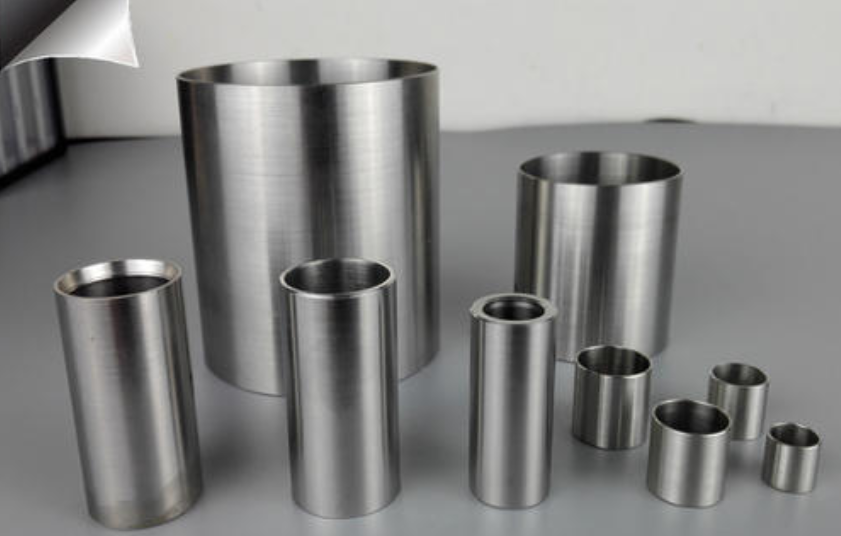What You Should Know About Molybdenum Alloys
The word molybdenum originates from the Latin term “Molybdaenum”, which signifies lead. The mineral was discovered in prehistoric times, but it was only isolated as an independent element in 1781 by Peter Jacob Hjelm. Before its identification, it was frequently confused with graphite and lead ore. When combined with other elements to produce molybdenum alloys, it has become a common component in steel production and other applications.

1. Basic Information on Molybdenum
Molybdenum is a silver-coloured metal that belongs to Group 6A of the periodic table’s second transition series. It has the sixth highest melting point and is the 54th most abundant element on Earth. The largest molybdenum reserves in molybdenite ore are located in the USA, Canada, China, Peru and Chile.
Due to its physical properties, it functions as an effective thermal conductor and is an important alloying element in the manufacture of construction steel and stainless steel. It exhibits high corrosion resistance and retains its form at elevated temperatures.
The most widely used molybdenum alloy is the Titan-Zirkonium-Molybdän-Legierung (TZM). This alloy comprises 0.5% titanium, 0.08% zirconium and roughly 90% molybdenum. It maintains high strength at elevated temperatures and is therefore employed in zinc die-casting.
2. Applications of Molybdenum Alloys
Among refractory metals, molybdenum is the most frequently used. Its primary application is as a strengthening alloy in steel production. Molybdenum alloys are generally supplied as coils, sheets, bars or rods. These materials are employed in the manufacture of steel, cast iron and other technical products. They serve sectors such as the automotive industry, stainless steel production, shipbuilding, aerospace and other specialised industries.
The alloys maintain their structural integrity up to temperatures of 1 900 °C. Consequently, they are utilised in furnaces for glass melting, in the production of X‑ray anodes for diagnostic equipment and in other high-temperature heating elements.
Molybdenum is also alloyed with metals such as tungsten (W), copper (Cu) and rhenium (Re). Mo‑W alloys are used because of their resistance to molten zinc in applications including agitators, pipelines and pump impellers. Mo‑Cu alloys are used in applications that require high electrical conductivity, for example in the production of electronic printed circuit boards. Mo‑Re alloys are known for their ductility and are used in components of rocket engines.
3. The Future of Molybdenum Alloys
Molybdenum and its alloys are employed in various industrial sectors, ranging from traditional steel production to emerging applications. New applications include the manufacture of advanced electronic devices, LED lighting and high‑efficiency solar cells.
Given its excellent thermal conductivity and its consistent performance in diverse chemical environments, molybdenum continues to be used in multiple industries. Although the global supply of molybdenum is limited, it remains an important element that affects the global economy.
Conclusion
We thank you for reading this article. We hope it has provided a clearer understanding of molybdenum alloys. If you wish to obtain further information about molybdenum products, please visit Stanford Advanced Materials.
Stanford Advanced Materials (SAM) is a global supplier of molybdenum alloys with over two decades’ experience in the production and distribution of molybdenum products. The company supplies products that meet the research and production requirements of its customers. We are confident that SAM will be your chosen molybdenum supplier and business partner.

 Bars
Bars
 Beads & Spheres
Beads & Spheres
 Bolts & Nuts
Bolts & Nuts
 Crucibles
Crucibles
 Discs
Discs
 Fibers & Fabrics
Fibers & Fabrics
 Films
Films
 Flake
Flake
 Foams
Foams
 Foil
Foil
 Granules
Granules
 Honeycombs
Honeycombs
 Ink
Ink
 Laminate
Laminate
 Lumps
Lumps
 Meshes
Meshes
 Metallised Film
Metallised Film
 Plate
Plate
 Powders
Powders
 Rod
Rod
 Sheets
Sheets
 Single Crystals
Single Crystals
 Sputtering Target
Sputtering Target
 Tubes
Tubes
 Washer
Washer
 Wires
Wires
 Converters & Calculators
Converters & Calculators
 Write for Us
Write for Us
 Chin Trento
Chin Trento



